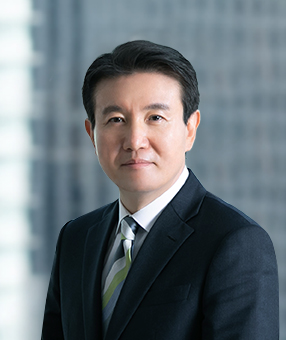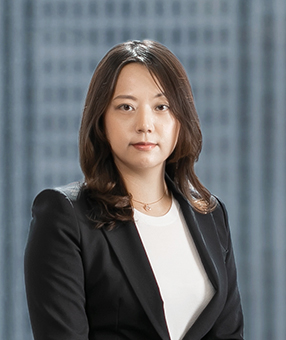An amendment to the Korean Patent Act ("KPA") that makes several major changes to Korean patent prosecution practice was promulgated on October 19, 2021 and will be effective on April 20, 2022. Some of the major changes include extending the period for responding to a final rejection from 30 days to 3 months, allowing a request for reconsideration to be filed even after receiving a notice of allowance, and introducing a "separate application" system that is intended to reduce the need to file precautionary divisional applications. These changes largely enhance convenience and protection of rights for applicants and patentees, as discussed below.
Response to final rejection now due in 3 months rather than 30 days
Under the current KPA, an applicant has 30 days to file an appeal, a request for reconsideration, and/or a divisional/converted application in response to a final rejection. This 30-day period has been criticized as too short to fully prepare an appeal brief, an amendment for a request for reconsideration, and/or a claims set for a divisional application.
In the amended KPA, the 30-day period has been extended to 3 months after the date of receipt of the Notice of Final Rejection. Further, the initial 3 month period to respond to a final rejection can be extended an additional 60 days. Thus, it is expected that these measures will provide sufficient time for applicants to respond to a final rejection while saving costs for time extensions.
Applicants will now be able to request reconsideration of an application even after Notice of Allowance is issued
Currently, an applicant may respond to a "first final rejection" during prosecution by filing an amendment and a request for reconsideration, after which the examiner may allow the application, or issue a "second final rejection." However, once a Notice of Allowance is issued, the applicant can no longer file a request for reconsideration (e.g., to fix errors in the claims/specification). While it is possible to file a "correction" (post-grant amendment) of the patent after registration, this requires an additional administrative proceeding that can take up to a year to resolve, and corrections are relatively limited compared to amendments during prosecution since they must be narrowing and cannot substantially change the nature of what is claimed.
The amended KPA provides that a request for reconsideration may now be filed even after a Notice of Allowance, as long as it is filed before the application is actually registered as a patent. This should allow more flexibility for applicants to address any late-discovered issues with the claims, or even to amend the claims after allowance to respond to any changes that may have occurred in the market subsequent to the applicant's last response in the prosecution. However, if the application was allowed after filing a request for reconsideration in response to a first final rejection, another request for reconsideration cannot be filed. Further, the allowable scope of amendment to be filed with a request for reconsideration is limited to: (a) narrowing a claim; (b) correcting a clerical error; or (c) clarifying an ambiguous description. This means that expanding the claimed scope or adding a new claim would not be allowed.
New "separate applications" for non-rejected patent claims introduced
Under the current system, an applicant seeking to appeal a final rejection commonly also will file a divisional application to maintain the ability to continue prosecution if the appeal is dismissed or withdrawn, since the applicant only has a limited time after the final rejection to file such a divisional.
The amended KPA introduces the concept of a new "separate application" that may allow the applicant to preserve some patent rights in the application after an unsuccessful appeal of a final rejection, even if for some reason a divisional application was not filed. Under the amended KPA, if an appeal is dismissed, the applicant can file a "separate application" within 30 days for any patent claims that were pending in the application but not rejected in the final rejection. However, a separate application cannot be filed if all of the claims of the application were rejected, and further divisional/separate applications cannot be filed from a separate application, limiting the utility of such applications. Given such limitations of separate applications, filing a divisional application as a placeholder is still an important strategic option if the applicant chooses to file an appeal with the Intellectual Property Trial and Appeal Board (IPTAB) against a final rejection.
Automatic recognition of priority for divisional applications
Under current practice, priority must be specifically claimed for each new divisional application that is filed. The amended KPA provides that as long as priority is properly claimed in the original parent application, the same priority will automatically be recognized for any divisional application filed from that parent application, thereby reducing unnecessary procedures due to rejections based on inadvertent omission of the priority claim for a divisional application by the applicant.
Relaxed requirements for restoration of patent rights
In the past, in order to restore patent or other rights lost for failure to satisfy procedural requirements such as missing critical application deadlines, the applicant has been required to explain that the failure was due to "reasons not imputable to a person," which has in practice been construed very narrowly to mean an extreme event such as a natural disaster. In the amended KPA, the term "reasons not imputable to a person" has been relaxed to simply "reasonable reasons," in order to more broadly protect applicants/patentees from losing rights due to circumstances out of their control. The Korean Intellectual Property Office (KIPO) has indicated it will recognize some specific examples of such "reasonable reasons," including due to an applicant's medical condition. However, it has not yet been decided whether an agent's mistake, such as omission of a report to a client, will be recognized as a "reasonable reason."
Non-exclusive licenses to patent co-owners after transfer of patent rights
Under Korean patent practice, if some but not all of the co-owners of a patent right wish to sell their patent rights to a third party, they can request that a court conduct an auction to sell the entire patent right to the third party, and if the court agrees, the proceeds will then be distributed to the co-owners according to their share ratios, regardless of whether the other co-owners consent to the sale. The amended KPA now provides that co-owners who do not consent to the sale will retain non-exclusive licenses to the transferred patent right after the sale in order to protect their ongoing business interests, in addition to the payment distribution.
Now possible to claim priority to domestic Korean applications after allowance
Until now, it has not been possible for a Korean application to claim priority to an earlier Korean application if the earlier application had already received a Notice of Allowance. Under the amended KPA, this restriction has been loosened, and domestic priority can now be claimed even for an allowed application as long as it has not yet been registered as a patent.
Related Topics






